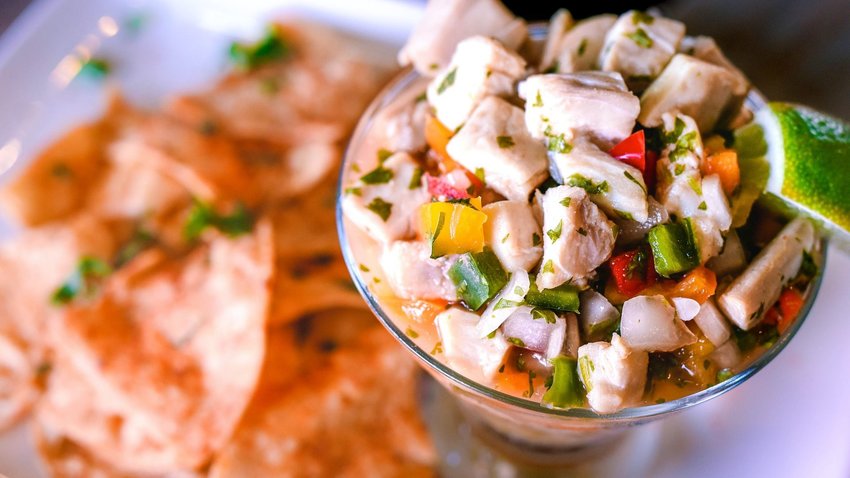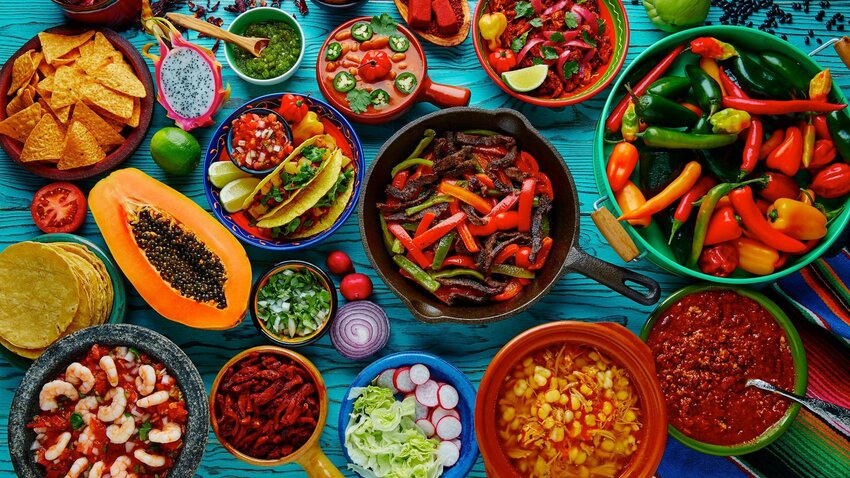Peruvian ceviche is a delicious, raw fish dish that always hits the spot on a hot summer’s day. Recently, Peru’s been recognised as an emerging destination for foodies, but ceviche has a history dating back 2,000 years and was probably introduced by the Moche people. Until you can get to this popular South American country to experience it for yourself, here’s how to make it at home to tide you over.
How Do You Pronounce Ceviche?

If you’re keen to find out more about ceviche when you get to Peru, not to mention order it off a menu, then you’ll need to know how to say it correctly. Though there are a few variations on the spelling, such as cebiche and sebiche, it’s usually pronounced the same way: “say-bee-chay”. In Quechua, one of Peru’s indigenous languages, the word’s siwichi. The name ceviche is thought to come from the Spanish word for pickle or marinade, escabeche, itself derived from the Arabic sakbaj, meaning meat cooked in vinegar. Don’t confuse it with the dish escabeche; to prepare that you would need to sauté the fish first, something you would never do when preparing ceviche.
A Peruvian Tradition
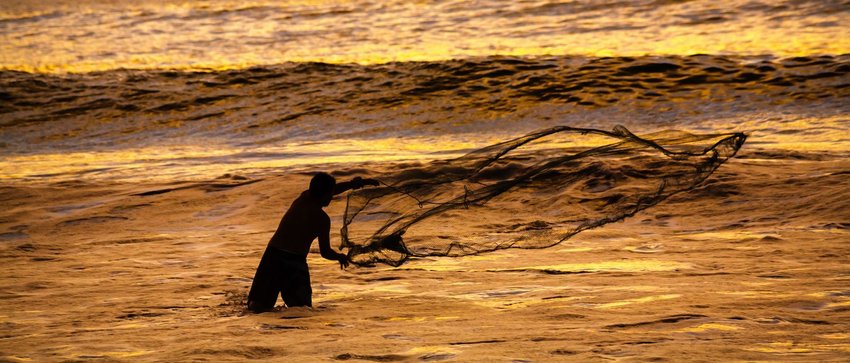
It should come as no surprise that a country with a 1500 mile long coastline has enjoyed a long and fruitful relationship with the sea. The country’s fishermen have been harvesting fish from the Pacific Ocean for centuries. Archaeologists have uncovered the remains of ancient fishing nets, and the tradition of using reed boats known as caballitos de tortora continues to this day in places like Huanchaco, in the city of Trujillo.
While the commercial fleet trawls mostly for hake, Peru’s many small-scale fishermen cast their nets for a wider range of species. The best fish is caught north of Lima, where the cold Humboldt and the warm Niño currents converge off the coast, creating unique conditions that bolster fish stocks.
How to Prepare Ceviche at Home

Ceviche’s a dish that’s not only delicious, but also quick and easy to prepare, making it a healthy weekday meal option. Peruvians often use a fish called corvina, but sea bass makes a good substitute, as does grouper or sole. The trick is to choose a fish with firm flesh that will hold its shape and not fall apart.
Step 1 for any self-respecting ceviche chef wannabe is to secure the freshest fish you can get your hands on. If you live by the coast, then you may have a local fish market. Talk to the fishmonger and explain that you intend to eat the fish raw, and therefore need the highest quality they’ve got. Often, they’ll call this sushi-grade.
Read up to familiarise yourself with the risks associated with eating raw fish, particularly parasites. If you’re not blessed with a fresh fish market in your area, frozen fish can be substituted. Remember, it should be treated with the same caution, but follow that FDA guidance to minimize any risk to your health.
The Recipe
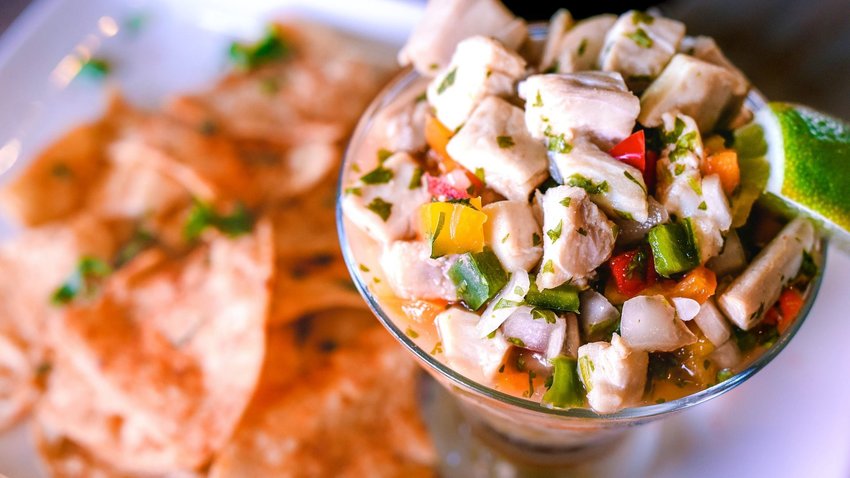
Top Peruvian chef Gastón Acurio’s recipe is worth seeking out; for more Peruvian cuisine buy his excellent cookbook too (also available at Bookshop.org). When travel resumes, you can try the real thing at La Mar, his Lima restaurant which specialises in seafood.
To make the Leche de Tigre (Tiger’s Milk), which effectively is what cooks the raw fish, you’ll need lime juice, smashed garlic, chopped cilantro, a chilli pepper, red onion and salt. Cut your fish into large cubes and toss in the Leche de Tigre. Leave to stand so that the citrus juices cure the raw fish.
Peruvians love their chilli, and serve their ceviche picante to cater for that preference. Factor in that Leche de Tigre and you’re left with a dish that has quite a kick. While you train your palate, feel free to rein in the chilli a little. Fill small bowls with a heap of the ceviche, garnish with chopped cilantro, and serve immediately with sweet potato and corn kernels.
Why Ceviche’s Best Eaten at Lunchtime
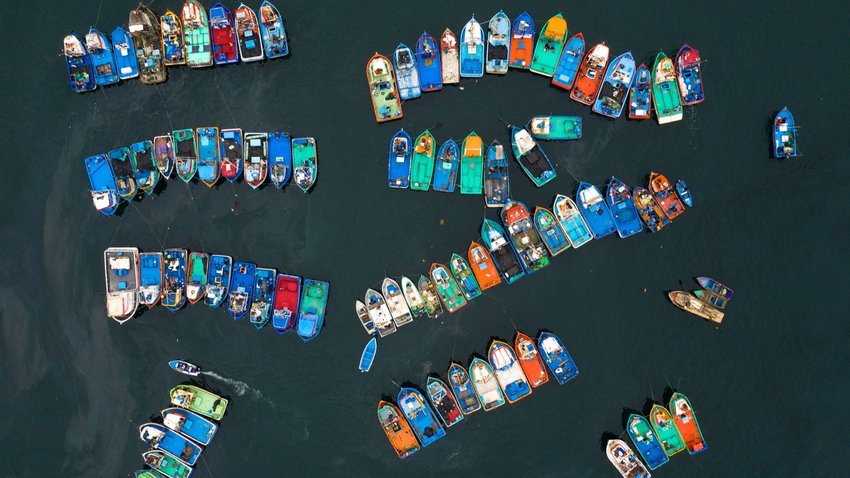
One last thing: no half-decent cevicheria would ever open in the evening. That’s because the best ceviche uses only the freshest fish. As the fishing boats go out overnight and return in the morning, their catch reaches the restaurants before lunchtime. So, to enjoy as an authentic experience as you can, set aside some time for a long, leisurely lunch. The ceviche takes only a little time to prepare, but you’ll want to savour the taste of it without having to rush.

